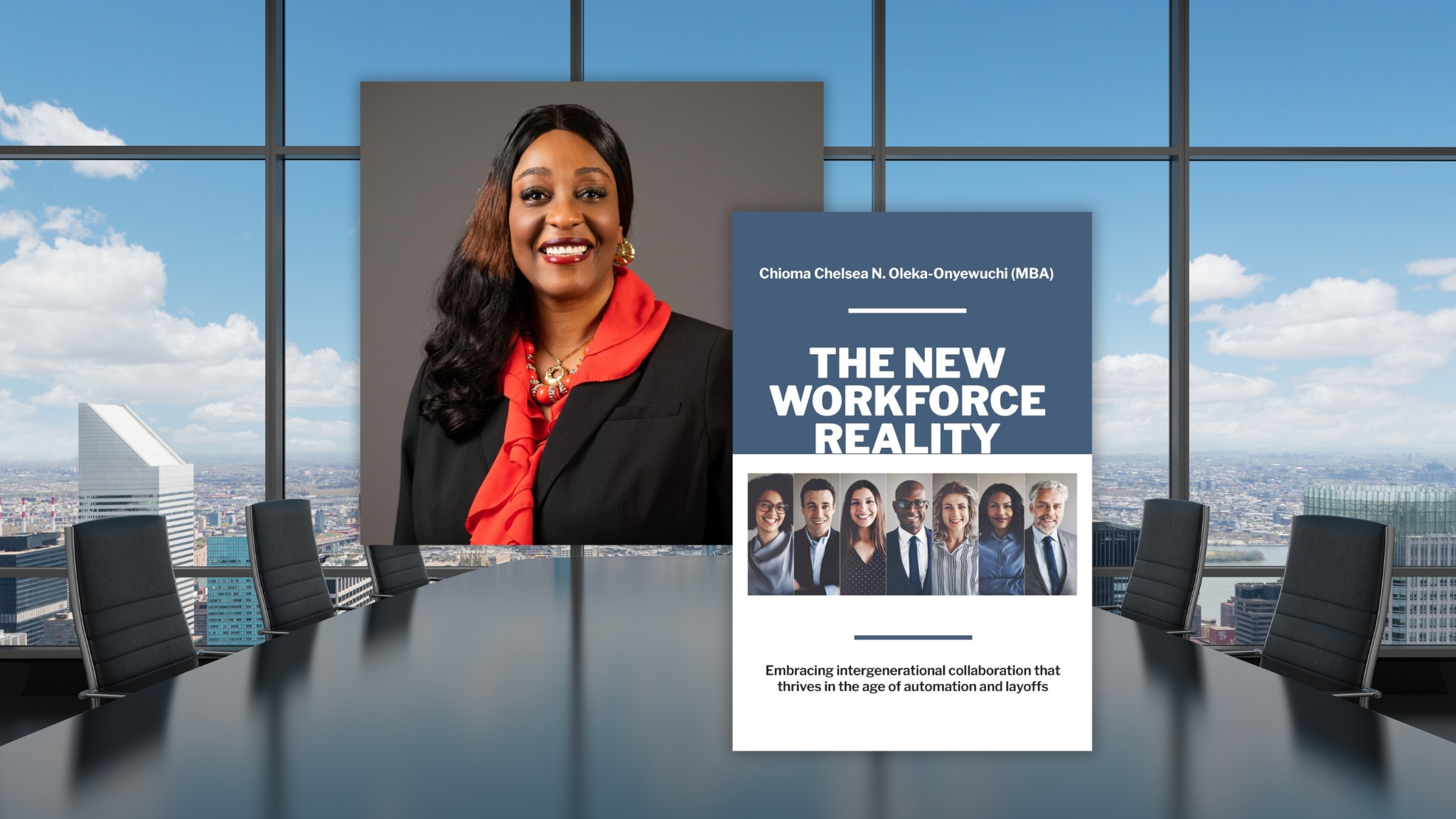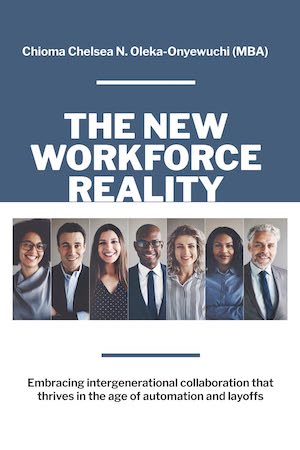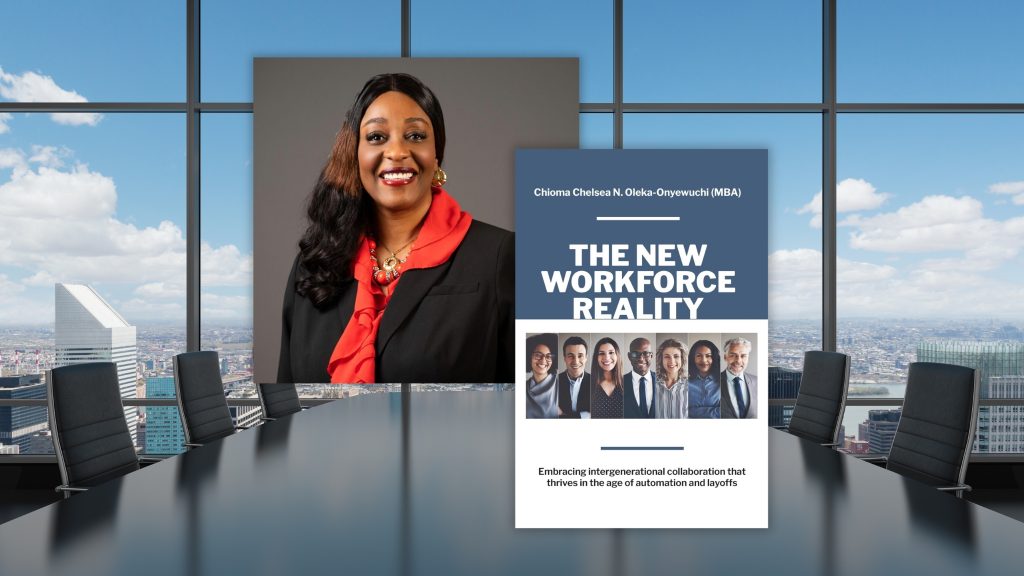
The New Workforce Reality by Chioma Chelsea N. Oleka-Onyewuchi
The changing dynamics in today’s workforce, between new technologies and intergenerational employees, is making organizations take a hard look at operations and processes to maximize productivity.
As a Talent Management Regeneration Strategist, Chioma Chelsea N. Oleka-Onyewuchi is familiar with organizational cultures and has addressed the topic head on in her new book, The New Workforce Reality: Embracing Intergenerational Collaboration That Thrives in the Age of Automation and Layoffs (Gatekeeper Press).
In a recent interview with BookTrib, the author had a chance to discuss some of the key issues in today’s workforce.
Q: Why did you write this book?
A: To guide readers into the transformative realm of The New Workforce Reality and help them navigate the intricate paths of the ever-evolving corporate landscape. The book is a comprehensive roadmap to help conquer the challenges driven by automation changes, intergenerational divides and emerging trends. It introduces methodologies that foster collaboration, bridging generational divides to unleash the power of optimized skillsets. It is designed to embrace a future-oriented mindset.
Q: What changes in the workforce have made intergenerational collaboration more important than ever?
A: With the rise of automation and digitalization, different generations bring distinct strengths and perspectives to the table. Younger generations possess digital fluency and adaptability, while older generations offer experience, wisdom and institutional knowledge. Combining these skills and insights fosters innovation, knowledge sharing and holistic problem-solving. Intergenerational collaboration harnesses the power of diverse perspectives, enriches decision-making processes and promotes mutual learning.
Q: Can you give an example or two of how communications can be strained between two specific intergenerational employees due to a lack of understanding or knowledge about that other generation?
A: A Baby Boomer, accustomed to more traditional communication methods, may prefer face-to-face interactions and phone calls, but a Gen Z employee, accustomed to digital communication, relies heavily on instant messaging and social media platforms. This mismatch can lead to misunderstandings, with the Gen Z employee perceiving the Baby Boomer as resistant to change, while the Baby Boomer may view the Gen Z employee as overly reliant on technology. Without bridging this gap and finding common ground, their communication can be strained, hindering collaboration and efficiency in the workplace.
Q: What are some of the common skill sets that can be easily integrated between generations?
A: Communication, adaptability, critical thinking, collaboration and digital fluency, to name a few. By recognizing and appreciating these shared skill sets, organizations can facilitate intergenerational collaboration, promoting a harmonious and productive work environment.
Q: If you were to characterize “modern communication” in the workforce, what kinds of words, skills and tools would you use?
A: Here’s my list: instantaneous, digital literacy, remote collaboration, multimodal, agile, active listening and emotional intelligence. Modern communication in the workforce can be characterized by several words, skills, and tools that reflect the current digital landscape. Modern communication tools encompass email clients, project management software, video conferencing platforms, instant messaging apps and social media networks, enabling seamless connectivity and collaboration.
Q: Are most companies succeeding or failing in getting the most productivity out of intergenerational employees working together?
A: It varies. While some companies have successfully harnessed the strengths of different generations and fostered effective collaboration, others still face challenges. Success largely depends on the organization’s commitment to creating an inclusive and supportive environment that values diverse perspectives, promotes knowledge sharing and encourages collaboration. Companies that invest in intergenerational training, mentorship programs and open communication channels tend to have higher chances of succeeding.
Q: What’s the one piece of advice you would give managers to address this topic in their organizations?
A: Foster a culture of inclusivity and collaboration by recognizing and valuing the unique strengths and perspectives of each generation. Encourage intergenerational knowledge-sharing and mentorship programs to facilitate mutual learning and understanding. Create open channels of communication to address potential misunderstandings. Provide opportunities for professional development and upskilling that cater to the diverse needs of different generations.
Q: What do you hope readers will take from this book?
A: I hope they gain a comprehensive understanding of the new workforce reality and be inspired to embrace the challenges and opportunities it presents. Through this book, readers will acquire practical strategies, insights, and tools to navigate the evolving landscape, optimize their skillsets and thrive in their careers.
RELATED POSTS:
Tips & Insights to Position Yourself for Success in Today’s Changing Workforce

Publish Date: August 12, 2023
Genre: Business
Author: Chioma Chelsea N. Oleka-Onyewuchi
Page Count: 226 pages
Publisher: Gatekeeper Press
ISBN: 9781662939822

